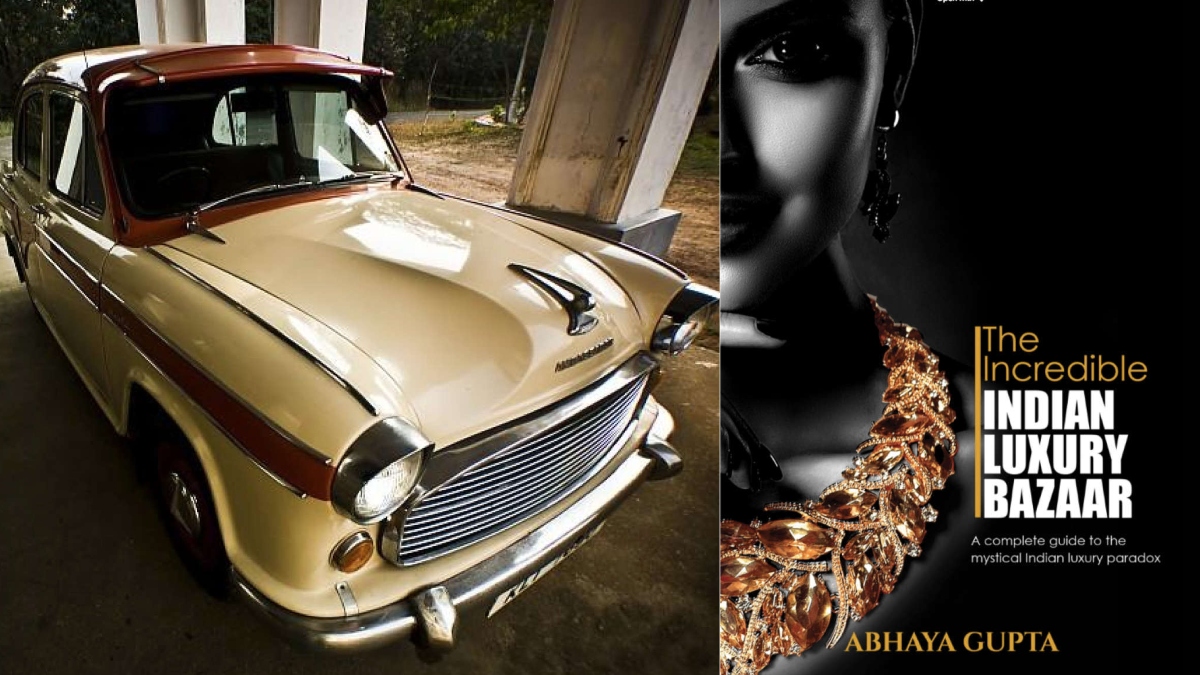


The Swadeshi movement, fuelled by a desire to be self-ruled and self-governed, led to a major upswing of the anti-British sentiment. Everything foreign was taboo. Luxury was definitely a strict ‘no’. Khadi became a norm and textiles made in the mills of the British Empire were discarded to be burnt in the streets.
In the princely states, however, the remnants of the Mughal aristocracy continued their extravagances with large palaces, harems, hordes of retainers, miniature armies, ceremonial elephants, tiger hunts, and stables full of Rolls Royces. Luxury became restricted to the aristocrats, yet spread to the new elite, the ‘brown sahib’.
Prior to Independence, the Swadeshi movement inspired Indians to shun everything European and embrace khadi. Post Independence, India adopted a socialism-inspired economic model with elements of capitalism. India adopted the five year plan periods from USSR’s centralized and nationalized approach. These policies further resulted in the decline of the aristocrats and their demand for western luxury in India.
India went through the painful and expensive process of Partition which brought about a phase of destruction and huge economic loss. Post-Independence India experienced a slow growth rate of 3.5% till 1980.
In 1938, the Nizam of Hyderabad was the richest man in the world with his assets being slightly higher than 30% of India’s relative GDP. Our nation witnessed the Hindu rate of growth from 1952 to 1980. In 2008, Mukesh Ambani was the richest man on earth with his assets being little above 20% of India’s GDP. During this period from 1966 to 1987, there was a steady decline in the wealth of the top 0.1% of India’s population. At the same time, the new rich are the new business and entrepreneurial class. The rise in market capitalisation also speaks of people who would be holding wealth in the form of investment in stock markets and can form another segment of the rich who can cater to luxury goods.
Post-Independence, with the demolition of the zamindari, caste and class systems, reforms were a way of the society. The British, having siphoned off most of India’s treasures and upper class income, a change in the pattern of consumption of the so-called elite was inevitable. No longer could the new upper class maintain palaces and harems or wear silks and muslins! The erstwhile kings had been stripped off their special status and were granted ‘privy purses’ by the Government of India. This was to let them maintain their personal style and well-being. This too was discontinued in 1971. However, post-Independence, there came the new classes of industrialists, bureaucrats, lawyers, doctors, teachers and journalists, whose social position was due to education and training rather than heredity. Meritocracy was the norm of the day.
The Rich of Independent India
Growth was relatively slow during the 1950s and 1960s. The process of nationalisation and License Raj affected the growth of the private sector. In the 1970s, anyone who had a car and a telephone was considered to be rich. During this period, a basic home appliance like a refrigerator was so rare that it found space in the living room and serving ‘fridge water’ to guests was a matter of great pride. The opulence of the Maharajas was history after Indira Gandhi sensibly scrapped the Privy Purse in 1971. As a result, Indians started looking at the West for swanky lifestyle models. A few who went abroad returned with designer labels. There was also the rise of a class of rich which depended on smugglers to satisfy their quest for luxury, of which, luxury spirits were the most prominent.
There was a notable change in the import of luxury cars during this period too. An embryonic car manufacturing industry was developed in the 1940s. Hindustan Motor was launched in 1942, followed by Premier in 1944 and Mahindra and Mahindra in 1945. Post Independence, there was a law restricting the import of fully built up cars. The Government of India, along with the private sector, tried to develop automotive parts manufacturing units as well.
Hindustan Motors’ cars in the 1940s
Fashion became the symbol of luxury for most Indians where the upper crust still used the Victorian and Mughal styling. The 1960s saw body hugging suits, sleeveless tops, bell-bottom trousers and more which were all inspired by Bollywood and gained mass popularity during this period. This was followed by the most colourful decade of 1970s, with vibrant colours, bold designs and a sense of desperation to be liberated in the form of the hippie culture. Post Independence, there was also the revival of traditional textiles. A large part of the revival movement in Indian fashion was brought about by Ritu Kumar who worked on the traditional hand-block printing techniques of Bengal. She also worked on zardozi embroidery in her garments, which had its origin in the royal costumes dating back to the Mughal era, leading to the rediscovery of Indian heritage.
The influence of Bollywood
The single biggest contributing factor to the development of luxury has been fashion and the influence of the film industry. Bollywood was an early trendsetter where, in 1960, costume designers like Bhanu Athaiya started experimenting with film fashion. Over the years, popular Bollywood trends were the differentiator between ordinary or fashionably luxurious attire. Gradually, situations and themes out of Indian cinema became Westernised, paving the way to diverse global fashion exposure.
Abhay Gupta is a luxury thought leader, retail expert, philanthropist, author, speaker and an MGSCC-certified leadership coach. During his long career, he has headed brands like Versace, Corneliani, Versace Home, Trussardi Jeans, and Cerutti.